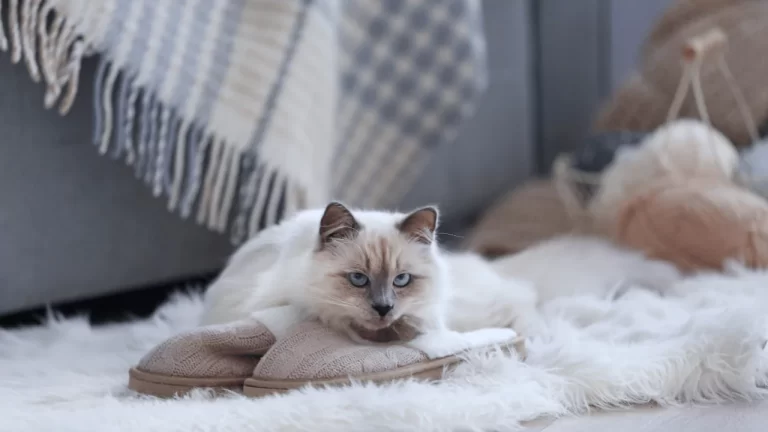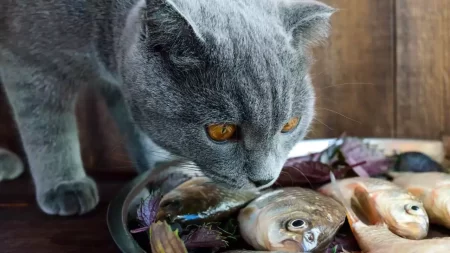Some people choose to keep their cats indoors because they believe it is safer, healthier, and more humane for both their pets and the environment.
Indoor cats are less likely to face the dangers of traffic, predators, diseases, parasites, and human cruelty that outdoor cats often encounter.
They also have lower risks of getting lost, injured, or killed by other cats or wildlife. Indoor cats can also enjoy a longer lifespan and a better quality of life than outdoor cats, as long as they are provided with adequate exercise, stimulation, and care by their owners.
Keeping cats indoors also helps to protect the wildlife from the predatory impacts of outdoor cats, which can threaten the survival of many bird and small mammal species.
The Debate: Indoor vs. Outdoor Cats
There is an ongoing debate among cat owners, animal welfare advocates, and conservationists about whether cats should be allowed to roam outdoors or be confined indoors. Some people argue that outdoor cats have more freedom, natural behavior, and happiness than indoor cats. They claim that cats need to hunt, explore, and socialize with other cats to fulfill their instincts and needs. They also point out that some cats are feral or stray and cannot be easily adapted to indoor living.
However, there are many dangers and disadvantages of allowing cats to roam outdoors. These include:
Dangers of Allowing Cats to Roam Outdoors
- Traffic: Outdoor cats are at risk of being hit by cars or other vehicles, which can cause serious injuries or death. According to a study by the University of Georgia and National Geographic, traffic was the leading cause of death for outdoor cats in urban areas.
- Predators: Outdoor cats may encounter predators such as coyotes, dogs, foxes, raccoons, hawks, owls, or snakes that can harm or kill them. A study by the Smithsonian Migratory Bird Center and U.S. Fish and Wildlife Service found that predators were responsible for 28% of cat deaths in rural areas.
- Diseases: Outdoor cats are exposed to various infectious diseases that can affect their health and lifespan. Some of these diseases include feline leukemia (FeLV), feline immunodeficiency virus (FIV), feline infectious peritonitis (FIP), rabies, toxoplasmosis, and cat scratch disease. These diseases can also be transmitted to other cats, wildlife, or humans.
- Parasites: Outdoor cats can pick up parasites such as fleas, ticks, ear mites, worms, and ringworms that can cause itching, skin infections, anemia, vomiting, diarrhea, or other complications. These parasites can also infest the home environment and affect other pets or people.
- Human cruelty: Outdoor cats may face abuse or mistreatment from some people who dislike or fear them. They may be poisoned, shot, trapped, or harmed in other ways. Some places have laws or policies that allow the removal or euthanasia of outdoor cats.
- Injuries: Outdoor cats may get into fights with other cats or animals that can result in wounds, abscesses, infections, or scars. They may also suffer from injuries caused by barbed wire, sharp objects, traps, or other hazards.
Behavioral Benefits of Keeping Cats Indoors
Contrary to the belief that outdoor cats are happier than indoor cats, research has shown that indoor cats can have similar levels of welfare and well-being as outdoor cats. Indoor cats can also exhibit natural behaviors such as hunting, playing, grooming, scratching, climbing, and resting if they are given appropriate outlets and opportunities by their owners. Some of the benefits of keeping cats indoors include:
- Security: Indoor cats feel safe and comfortable in their home environment where they have access to food, water, shelter, litter boxes, toys, and human companionship. They do not have to worry about predators, competitors, or threats that outdoor cats face.
- Stability: Indoor cats have a consistent and predictable routine that reduces their stress and anxiety levels. They do not have to deal with changes in weather, seasons, daylight hours, or human activities that outdoor cats experience.
- Bonding: Indoor cats have more opportunities to bond with their owners and other pets in the household. They can enjoy cuddling, petting, playing, and communicating with their human family members. They can also socialize with other cats if they are properly introduced and supervised.
Cat Containment Tips for Indoor Living
Keeping cats indoors does not mean depriving them of their natural needs and desires. It means providing them with a safe, enriched, and stimulating indoor environment that meets their physical, mental, and emotional needs. Some tips for cat containment include:
Providing Adequate Exercise and Stimulation
- Toys: Provide a variety of toys that appeal to the different senses and preferences of your cat. These can include balls, mice, feathers, laser pointers, puzzle toys, or interactive toys that move or make noises. Rotate the toys regularly to keep your cat interested and engaged.
- Playtime: Spend at least 15 minutes a day playing with your cat using toys that mimic prey movements and sounds. This will help your cat exercise their hunting skills and release their pent-up energy. You can also use clicker training or treat rewards to teach your cat tricks or commands that challenge their intelligence and motivation.
- Scratching: Provide scratching posts or pads that allow your cat to mark their territory, stretch their muscles, and groom their claws. Choose materials that your cat likes, such as sisal, carpet, wood, or cardboard. Place them in strategic locations where your cat likes to scratch, such as near windows, doors, or furniture.
- Climbing: Provide vertical spaces such as cat trees, shelves, perches, or hammocks that allow your cat to climb, jump, and explore. This will help your cat exercise their agility and balance, as well as satisfy their curiosity and need for height. Make sure the spaces are sturdy, stable, and secure to prevent falls or injuries.
Understanding Cat Behavior
- Litter boxes: Provide at least one litter box per cat plus one extra in the household. Choose litter boxes that are large enough for your cat to turn around and dig comfortably. Use unscented clumping litter that is easy to scoop and clean. Place the litter boxes in quiet, accessible, and well-ventilated locations away from food and water bowls. Scoop the litter boxes daily and wash them weekly to prevent odors and infections.
- Grooming: Brush your cat regularly to remove loose hair, dirt, and debris. This will help your cat maintain a healthy coat and skin, as well as reduce hairballs and shedding. Use a brush that is suitable for your cat’s fur type and length. You can also trim your cat’s nails every few weeks to prevent overgrowth or splitting. Avoid bathing your cat unless necessary, as most cats groom themselves adequately.
- Health care: Take your cat to the veterinarian at least once a year for a wellness check-up, vaccinations, parasite prevention, and dental care. This will help your cat stay healthy and prevent diseases or conditions that may affect their quality of life. Spay or neuter your cat to prevent unwanted pregnancies, reduce aggression, and lower the risks of certain cancers or infections.
Environmental Considerations
Keeping cats indoors not only benefits the cats themselves but also the environment. Outdoor cats can have a negative impact on wildlife populations, especially birds and small mammals, by preying on them or spreading diseases to them. Some environmental considerations include:
Impact of Outdoor Cats on Wildlife
- Predation: Outdoor cats are responsible for killing billions of birds and mammals annually in the U.S. Cats are efficient predators that can hunt even when they are not hungry. They can prey on native species that are endangered, threatened, or of conservation concern, such as Piping Plovers. They can also compete with native predators for food resources.
- Disease: Outdoor cats can transmit diseases to wildlife that can affect their health and survival. Some of these diseases include rabies, toxoplasmosis, feline leukemia, feline immunodeficiency virus, and feline distemper. These diseases can also pose a risk to human health and public safety.
- Habitat: Outdoor cats can alter or degrade wildlife habitat by trampling vegetation, digging soil, or depositing feces or urine. They can also disturb or displace wildlife by their presence, noise, or scent.
Ways to Support Bird Conservation
- Bird feeders: Provide bird feeders in your yard or balcony that offer seeds, nuts, fruits, or nectar for different types of birds. Choose feeders that are safe, clean, and resistant to squirrels or other pests. Place the feeders at least 10 feet away from windows or reflective surfaces to prevent bird collisions or injuries.
- Bird baths: Provide bird baths that offer fresh water for birds to drink or bathe. Choose bird baths that are shallow, wide, and easy to clean. Place the bird baths in shaded locations away from predators or sources of contamination.
- Bird houses: Provide bird houses that offer shelter or nesting sites for birds. Choose bird houses that are appropriate for the size, shape, and preference of the bird species you want to attract. Place the bird houses in secure locations away from predators or disturbances.
- Native plants: Plant native trees, shrubs, flowers, and grasses in your yard or balcony for bird food, cover, and nesting. Select plants for your climate, soil, and light. Do not use pesticides or herbicides that damage birds or animals.







